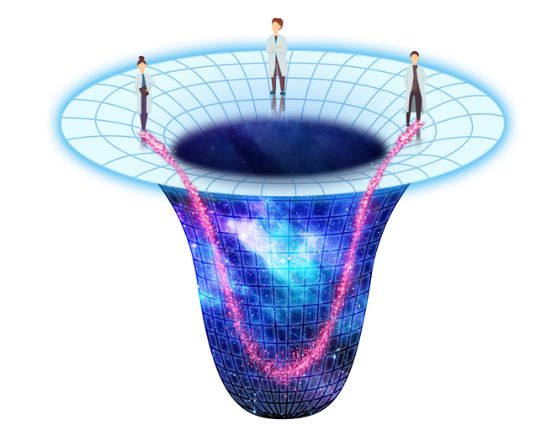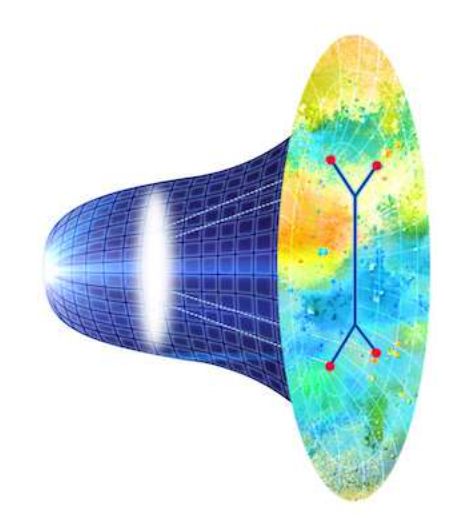
According to Einstein’s theory of general relativity, gravity arises from the curvature of spacetime, caused by the presence of massive objects.
This curvature, also, impacts the motion of all nearby objects thus, causing them to move in curved paths.
General relativity however breaks down under extreme conditions such as those found in black holes and the early universe.
These conditions comprise of high energies and densities, which exponentially influences the effects of quantum mechanics. And it has been observed that the laws of general relativity no longer provide a complete description of the physical phenomena.
In the case of black holes, the gravitational pull becomes so strong that nothing can escape, not even light.
At the singularity, that is, the center of the black hole, the laws of physics break down. Consequently, the theory of general relativity becomes inconsistent with quantum mechanics.
Similar behaviour is observed during the early universe. When the conditions were at its extreme, that is, super-hot and dense particles and radiation were tightly packed together. At that time, the laws of physics as we currently understand them do not apply.
Superstring theory
Researchers today are exploring the theories of quantum gravity. They envision to converge to a comprehensive theory that can explain the behaviour of the universe at its most fundamental level.
As of now, superstring theory is one of the leading candidates for a theory of quantum gravity.
It proposes that one-dimensional strings are the fundamental building blocks of the universe and not the particles. These strings, according to the theory, vibrate at different frequencies.
Another add on of superstring theory is that, there exist extra dimensions. These dimensions are thought to be extremely small, possibly only a fraction of a millimeter in size. And they could be curled up within our 3-dimensional reality.
De Sitter Space
In a recent development, scientists at Kyoto University, led by Dr. Yasunori Nomura, has been working on a new approach to understand the behaviour of gravity in the early universe using the concept of de Sitter space.
De Sitter space is a mathematical concept which describes a universe that is expanding at an accelerated rate, such as the early universe after the Big Bang.
The team has proposed that de Sitter space can be thought of as a holographic projection from a higher-dimensional space. The concept is quite like the holographic principle in string theory.

Holographic principle
According to the holographic principle, any information within a volume of space can be thought of as being encoded on the boundary of that space.
When the idea is applied to black holes, it gives an interesting inference.
Since matter can neither be created nor destroyed so if anything falls into a black hole, the thing/information will not be smashed rather it will be “somehow” stored on the surface of the black hole itself. This, illustrates the holographic principle.
Gravity is holographic projection from a higher-dimension
Thinking on these lines, team at Kyoto University has proposed that the holographic principle can also be applied to de Sitter space.
Since, Sitter space is expanding at an accelerated rate, it has a positive cosmological constant.
The team suggested that de Sitter space can be thought of as a lower-dimensional projection of a higher-dimensional space.
By keeping the holographic principle constant here, the information about the behaviour of gravity in de Sitter space is thus, encoded on the boundary of the higher-dimensional space.

Takeaway
The idea that the gravity in de Sitter space as a holographic projection from a higher-dimensional space is not new. However, if the team explore it further, it could bridge the gap between the theories of general relativity and quantum mechanics.
A challenge which has been long due in physics.
The concept of a higher-dimensional space is also a central feature of string theory. Therefore, the idea led by Dr. Yasunori Nomura and the team could contribute to validate the superstring theory as well.
Via: phys.org



